Disclosure: This article contains affiliate links. We may earn a commission from purchases at no extra cost to you, which helps our travel content.
The rhythmic pulse of samba music fades as you venture beyond Rio's postcard shores. While tourists flock to the crescent sweep of Copacabana and the fashion-forward Ipanema, the soul of Rio's coastal identity lies in its lesser-known stretches of sand—places where cariocas (Rio locals) escape the crowds and reconnect with the wild beauty that defines Brazil's coastline. During my recent summer sabbatical, I traded my consulting calendar for a well-worn Havaianas map, determined to discover the beaches that don't make it onto the glossy travel brochures. What I found was nothing short of wabi-sabi perfection—the Japanese concept of beauty in imperfection that my mother often spoke of during my childhood in Edinburgh. These hidden coastal havens offer not just pristine sands and crystalline waters, but windows into authentic Brazilian life, where the pretense falls away and the genuine spirit of Rio reveals itself in quiet coves and fishing villages seemingly untouched by time.
Prainha: The Surfer's Paradise
Just 30 kilometers west of the tourist bustle lies Prainha, a crescent of golden sand embraced by lush Atlantic rainforest. Unlike its famous cousins to the east, this beach remains largely untouched by commercial development—a deliberate conservation effort that has preserved both its natural beauty and its powerful, consistent waves.
On my second morning in Rio, I rose before dawn, strapped my water-resistant daypack to my motorcycle rental, and followed the coastal road as it wound through Barra da Tijuca. The journey itself is half the experience—as you navigate the curves of Avenida Estado da Guanabara, the cityscape gradually surrenders to verdant wilderness, punctuated by glimpses of the glittering Atlantic.
When I arrived, local surfers were already dancing across waves that rolled in with remarkable consistency. 'The break here is technical but forgiving,' explained Mateus, a sun-weathered surfing instructor who offered to show me the ropes. For intermediate surfers, Prainha offers the perfect balance of challenge and accessibility—the waves powerful enough to thrill but predictable enough to build confidence.
After my lesson, I retreated to the shade of a simple beachside kiosk, where I savored a plate of freshly caught fish and ice-cold coconut water. The absence of high-rise hotels and chain restaurants creates a refreshing authenticity that feels increasingly rare in our homogenized world. Here, time moves to the rhythm of the tides rather than the urgent ping of notifications.

💡 Pro Tips
- Visit on weekdays to avoid the weekend crowds from the city
- Arrive early (before 9 AM) for the best surfing conditions and parking spots
- Bring cash as card facilities are limited at the beach kiosks
Joatinga: Rio's Secret Cove
If exclusivity is what you seek, Joatinga delivers in spades. Tucked away in Joá, one of Rio's most affluent neighborhoods, this small beach remains hidden to most tourists due to its challenging access and limited visiting hours. The beach is only accessible during low tide, creating a natural exclusivity that keeps crowds at bay.
To reach this secluded paradise, I navigated a steep trail descending through Atlantic forest—a journey that demands proper footwear and a moderate level of fitness. My trail running shoes proved invaluable on the occasionally slippery path, providing the grip needed to negotiate the final rocky descent.
The effort, however, pays dividends in solitude. On a Tuesday afternoon in February, I shared the beach with only a handful of locals—mostly affluent residents from the surrounding hillside homes and in-the-know cariocas seeking respite from the city's energy.
The water at Joatinga is remarkably clear by Rio standards, with a deep blue hue that transitions to turquoise near the shore. Strong currents make swimming challenging for novices, but the natural rock pools formed at low tide offer safer alternatives for cooling off. I spent hours alternating between these natural jacuzzis and the shade of my beach umbrella, reading Gabriel García Márquez and occasionally glancing up to watch eagles soaring above the dramatic cliffs.
As the tide began its inevitable return, beachgoers packed up in unison—a reminder of nature's authority over this special place. The enforced temporality of Joatinga creates an atmosphere of mindfulness; everyone present seems to appreciate the fleeting privilege of occupying such beauty.

💡 Pro Tips
- Check tide tables before visiting—the beach disappears completely at high tide
- Pack your own refreshments as there are no vendors on the beach
- Wear proper footwear for the steep trail access
Grumari: Wild Beauty Beyond the City
Further west than Prainha lies Grumari, a 3-kilometer stretch of undeveloped coastline that feels worlds away from Rio's urban beaches. Protected as part of an environmental conservation area, Grumari represents coastal Brazil in its most pristine form—a rarity so close to a major metropolis.
The journey to Grumari takes commitment. Public transport is virtually non-existent, making a rental car or taxi the most practical options. The road winds through rural landscapes dotted with small farms and fruit stands selling fresh produce from the surrounding agricultural area.
Upon arrival, I was struck by the dramatic contrast between Grumari and the beaches closer to the city center. Here, no high-rises punctuate the horizon—just rolling hills covered in native vegetation that tumble down to meet golden sand. The beach itself is remarkably wide, allowing visitors to spread out even on busy days.
During my visit, I joined a group of locals for a game of footvolley—a uniquely Brazilian hybrid of football and volleyball that showcases the remarkable technical skill of even casual players. Between matches, I cooled off in the powerful Atlantic waves, which demand respect but reward swimmers with refreshing clarity uncommon in urban areas.
For lunch, I bypassed the handful of simple restaurants along the road in favor of a picnic assembled from my morning visit to the feira (farmers market) in Barra. Fresh pão de queijo (cheese bread), tropical fruits, and locally produced cachaça made for a simple feast that perfectly complemented the untamed setting.
As the afternoon progressed, I hiked to the eastern end of the beach, where a small trail leads to natural pools formed among the rocks. Here, sheltered from the open ocean's power, I floated peacefully while watching frigatebirds soar overhead—a moment of connection with nature that felt almost spiritual in its simplicity.
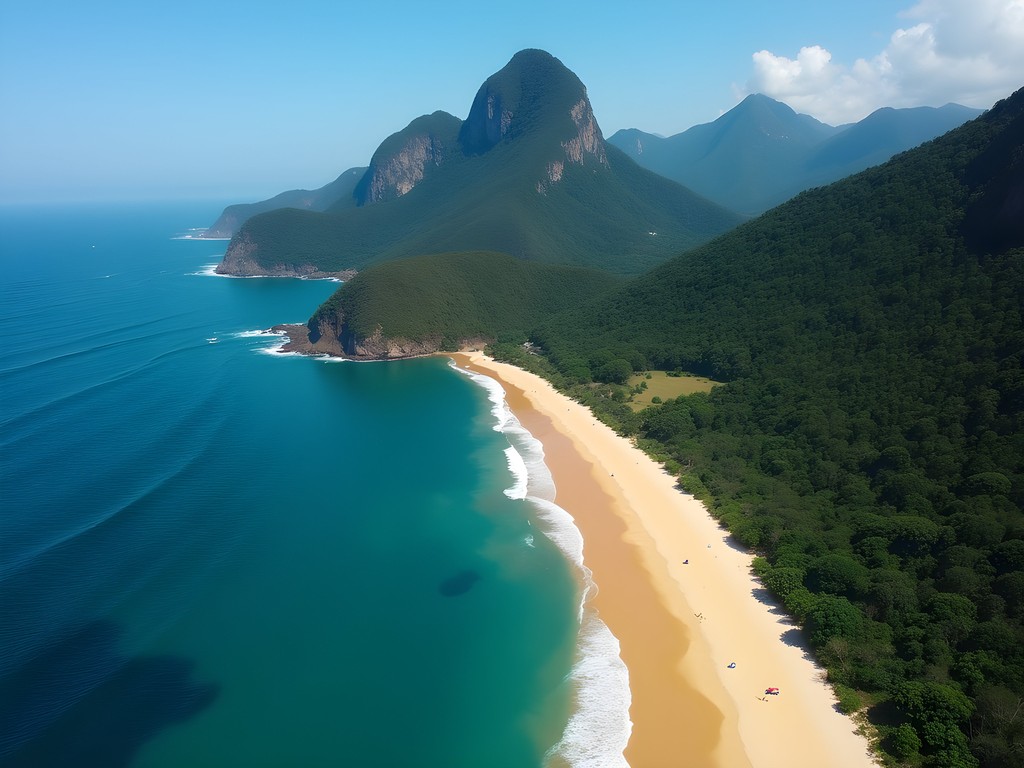
💡 Pro Tips
- Bring ample water and sun protection as shade is limited
- Consider visiting the nearby organic farms that sell fresh produce directly to visitors
- The beach has basic facilities including showers and toilets, but they're rustic by urban standards
Ilha de Paquetá: Island Escape in Guanabara Bay
For a complete change of pace, Paquetá Island offers a journey back in time just 70 minutes from downtown Rio by ferry. This car-free island in Guanabara Bay presents a slice of colonial Brazil preserved like an insect in amber—complete with colorful Portuguese architecture, horse-drawn carriages, and beaches with views of Sugarloaf Mountain in the distance.
I caught the traditional yellow ferry from Praça XV in Centro, where R$7 (approximately £1) purchased not just transportation but a transition to a slower way of life. As we pulled away from the mainland, the city's iconic skyline gradually receded, replaced by the approaching silhouette of this 1.2-square-kilometer island paradise.
Paquetá operates at a pace dictated by feet, bicycles, and the occasional horse-drawn carriage rather than engines. I opted to rent a bicycle from a vendor near the ferry terminal—the ideal way to circumnavigate the island in a leisurely two hours. My compact camera barely left my hand as I pedaled past colonial mansions, their facades painted in pastel hues that pop against the tropical vegetation.
The beaches of Paquetá lack the dramatic surf of their oceanic counterparts, offering instead calm, shallow waters perfect for families with young children. At Praia da Moreninha, named after a famous Brazilian novel set on the island, I watched local children building elaborate sandcastles while their parents sipped cold beer under rented umbrellas.
For lunch, I followed a local recommendation to a simple restaurant serving the day's catch prepared with minimal fuss but maximum flavor. The moqueca (seafood stew) featured fish caught that morning in the surrounding bay, transformed by coconut milk, dendê oil, and generations of culinary wisdom into something far greater than the sum of its parts.
As afternoon mellowed into evening, I found myself at the western edge of the island, where a small beach offers uninterrupted views of the sunset behind Rio's mountainous skyline. Sharing this moment with a mix of day-trippers and the island's 3,000 permanent residents, I felt I'd discovered a secret hiding in plain sight—a community that has deliberately chosen to preserve its connection to a simpler time despite the metropolitan giant that looms just across the water.
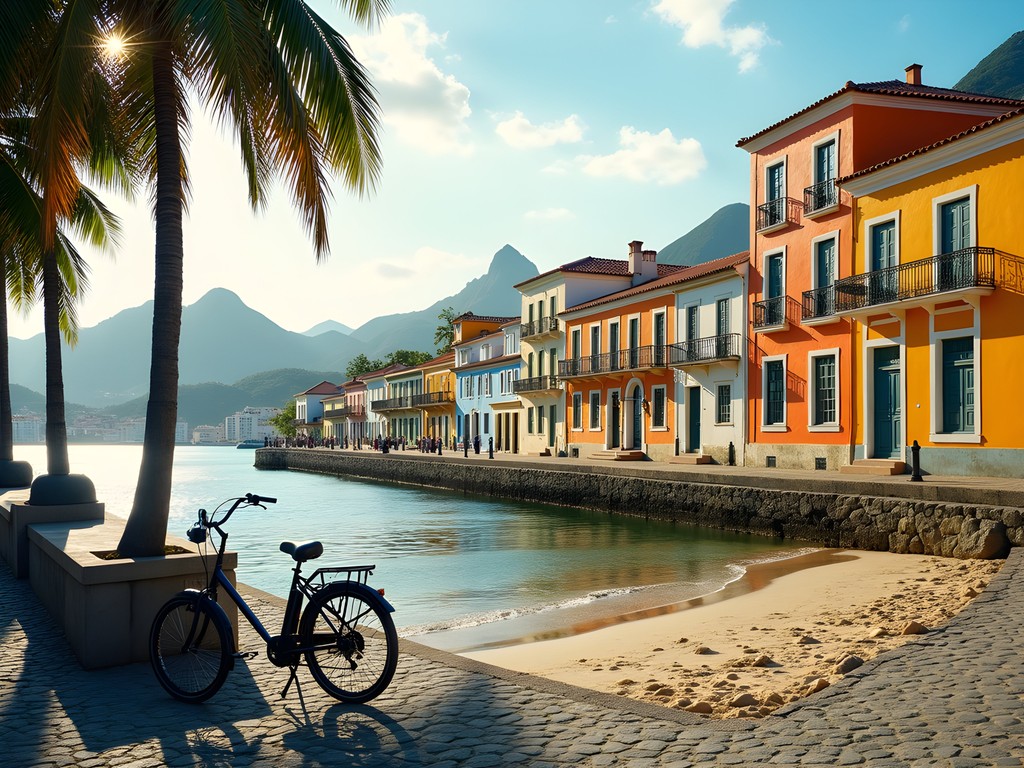
💡 Pro Tips
- The last ferry back to Rio leaves earlier than you might expect—check the schedule carefully
- Bring insect repellent as mosquitoes can be prevalent in the island's interior
- Many businesses close for siesta in the afternoon—plan meals accordingly
Niterói's Hidden Gems: Beaches Across the Bay
Most visitors to Rio never cross Guanabara Bay to explore Niterói, the city's often-overlooked neighbor. This oversight means missing some of the region's most spectacular coastal scenery and least crowded beaches—a mistake I was determined not to make during my exploration of Rio's hidden shores.
The journey to Niterói takes just 20 minutes via ferry from Praça XV, though I opted to drive across the distinctive Rio-Niterói Bridge for the panoramic vistas it offers. My first destination was Itacoatiara, a beach consistently rated among Brazil's most beautiful yet remarkably free from international tourism.
Flanked by massive granite formations and backed by Atlantic forest, Itacoatiara feels more like a remote coastal hideaway than a beach accessible by public bus from a major metropolitan area. The powerful shore break attracts bodyboarders and surfers from across Brazil, while the wide, impeccably clean sand provides ample space for sunbathers even on weekends.
What struck me most was the sense of community—groups of friends sharing massive coolers filled with cold drinks, families spanning three generations occupying the same stretch of sand they've visited for decades, and vendors who greet regular customers by name. I spent the morning bodysurfing in waves that demanded respect but rewarded effort with exhilarating rides toward shore.
For lunch, I ventured to nearby Camboinhas, where upscale beach clubs offer a more refined experience. At a restaurant built on stilts over the sand, I feasted on fresh oysters harvested that morning from the bay while sipping a crisp vinho verde that transported me momentarily to Portugal's Douro Valley.
As afternoon shadows lengthened, I made my way to Praia de Adão e Eva (Adam and Eve Beach), a small cove accessible only by a 20-minute hike through forest. The trail opens dramatically onto a pristine beach where clothing is optional and development non-existent. Swimming in the crystal-clear water as the setting sun painted the sky in shades of amber and rose, I felt I'd discovered the perfect antidote to Copacabana's sensory overload.
Returning to Rio at dusk, the city lights began their nightly dance across the bay. From this perspective—looking back at the city I'd temporarily escaped—I gained a new appreciation for Rio's dual identity as both urban powerhouse and natural paradise.

💡 Pro Tips
- The ferry between Rio and Niterói offers the best views of both cities' skylines
- Beach facilities at Itacoatiara are limited—bring what you need for the day
- Uber works well in Niterói and is often the easiest way to reach beaches beyond the ferry terminal
Final Thoughts
As my week of coastal exploration drew to a close, I found myself sitting on the ferry back from Paquetá, watching Rio's famous skyline grow larger on the horizon. The beaches I'd discovered beyond the well-trodden sands of Copacabana and Ipanema had revealed a different Rio—one where nature still holds sway and communities maintain connections to traditions that predate the tourist economy. These hidden shores offer more than just an escape from crowds; they provide windows into the soul of a city that exists beyond the postcard images. Whether you're seeking the perfect wave at Prainha, the exclusive seclusion of Joatinga, or the timeless tranquility of Paquetá, Rio's secret beaches reward those willing to venture beyond the obvious. In the Scottish tradition of my father, I'd call these places 'kenspeckle'—remarkable and worthy of recognition—while embodying what my Japanese mother would call 'ichi-go ichi-e'—unique moments in time that can never be replicated. I urge you to seek them out while they still retain their authentic character and connection to the true spirit of Rio de Janeiro.
✨ Key Takeaways
- Rio's hidden beaches offer a more authentic experience than famous tourist beaches
- Each secret beach has its own distinct character, from surf paradises to historic island retreats
- Local transportation including ferries and rental cars makes these beaches accessible with some planning
- Visiting during weekdays dramatically improves the experience at most hidden beaches
📋 Practical Information
Best Time to Visit
December through March (summer in Southern Hemisphere)
Budget Estimate
R$150-300 per day excluding accommodation
Recommended Duration
5-7 days
Difficulty Level
Moderate

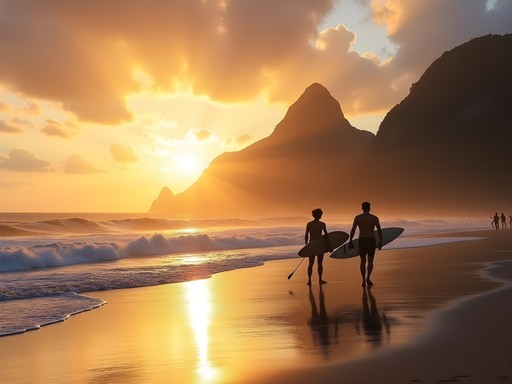
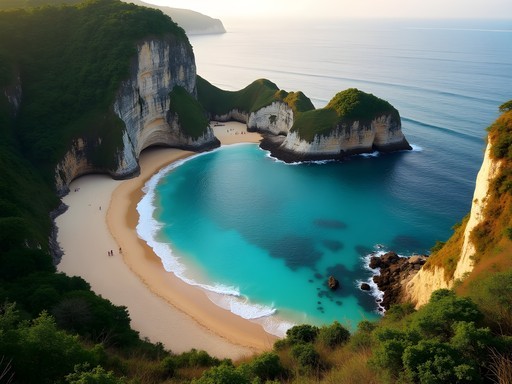

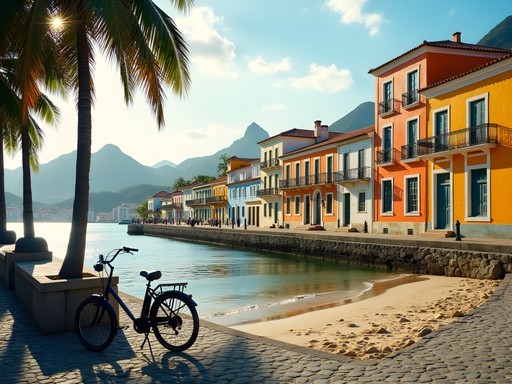
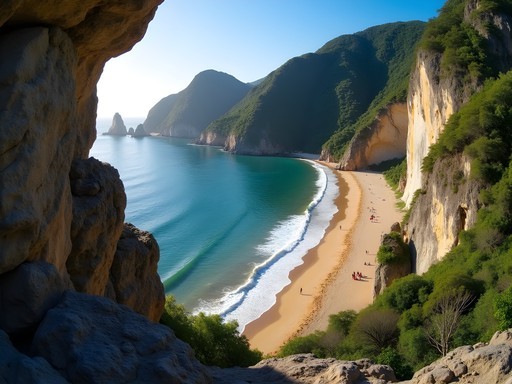


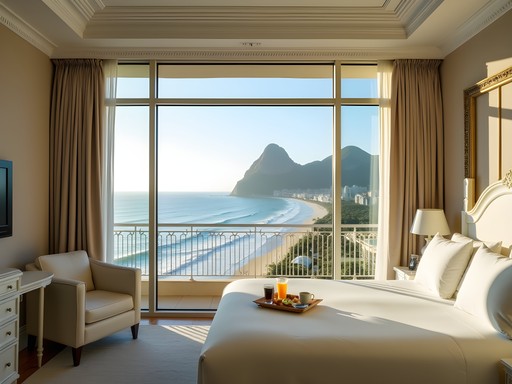

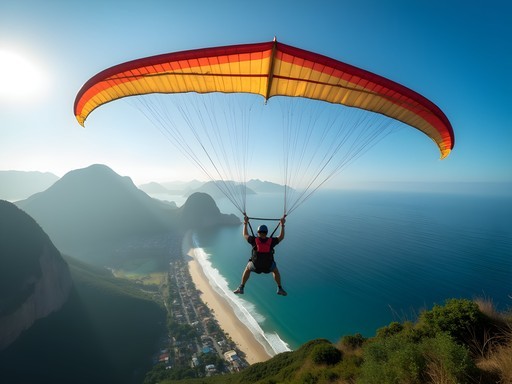
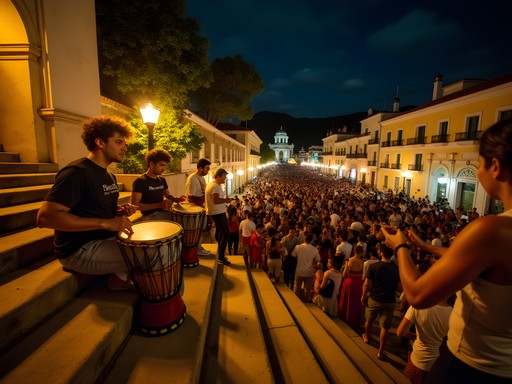




Comments
SunSeeker99
That shot of the sunset at Grumari is absolutely magical! What camera do you use?
Carter Sato
Thanks! Just my trusty phone camera actually - Google Pixel with a bit of editing in Lightroom. The natural light at Grumari does most of the work!
islandclimber
How's the snorkeling at Grumari? Worth bringing gear?
Carter Sato
The snorkeling at Grumari is decent but not spectacular. Water clarity varies a lot depending on recent weather. The rocky areas at the far western end have some fish, but don't expect Caribbean-level visibility. If you already have compact gear, bring it, but I wouldn't buy or rent specifically for this spot.
islandclimber
Perfect, thanks! Might just stick to swimming then and save the gear space in my backpack.
Bryce Diaz
Carter, your post brought back so many memories! I spent a month in Rio last year and discovered Ilha de Paquetá by accident when a local friend suggested it. That car-free island feels like stepping back in time! We rented bikes and circled the whole island, stopping at that little beach on the eastern side where locals were grilling fresh fish. The ferry ride itself is worth it just for the views of Sugarloaf Mountain from the water. One tip for anyone going: the last ferry leaves earlier than you might expect, so check the schedule carefully. I almost got stranded overnight because I lost track of time watching the sunset with my compact binoculars from that hilltop viewpoint.
TravelingTeacher
Is it possible to reach these beaches using public transportation or do you recommend renting a car?
Carter Sato
You can definitely reach them by public transport! For Prainha and Grumari, take bus 384 from Jardim Oceânico metro station. For Joatinga, it's a bit trickier - bus to Barra then a short taxi ride is your best bet. Paquetá is easy - just hop on the ferry from Praça XV in downtown Rio. I actually prefer public transport as parking can be limited, especially on weekends.
TravelingTeacher
Thanks so much! Public transport it is then. Can't wait to explore these hidden gems!
beachfan
Great post! How safe is Joatinga compared to the main beaches? Planning a solo trip in January and wondering if I should be extra cautious at these hidden spots.
Carter Sato
Joatinga is generally safe during daylight hours when other visitors are around. I'd recommend not bringing valuables and going with at least one other person if possible. The trail down can be a bit steep and isolated, so morning visits when there are more people are best!
beachfan
Thanks for the tips! Will definitely plan for a morning visit then.
mountainvibes
This is exactly what I needed! Tired of the tourist traps and looking for something more authentic in Rio. Prainha looks amazing!
Bryce Diaz
Prainha is truly magical! I spent a whole day there last year watching surfers while enjoying a coconut from one of the local vendors. The waves are impressive even if you don't surf.
mountainvibes
Thanks Bryce! Did you rent a car or is there public transport to get there?
Bryce Diaz
I used Uber which was affordable, but there's also the 'Surf Bus' that runs from Barra Shopping to Prainha on weekends. Just be prepared for it to take a while!
RioLover2025
Those Joatinga photos are STUNNING! Adding it to my list for December!
Claire Hawkins
What a refreshing take on Rio! I visited with my family last summer and Ilha de Paquetá was the unexpected highlight of our trip. My kids still talk about renting those bicycles and circling the island! The ferry ride itself was such a lovely experience - watching the locals going about their day while getting those stunning views of Sugarloaf Mountain from the water. One tip for families heading there: pack a picnic as the food options can be limited depending on the day of the week. We brought our insulated backpack cooler which was perfect for keeping drinks cold in that Rio heat!
BeachHopper22
How safe did you feel on Paquetá with kids? Planning a family trip for January!
Claire Hawkins
Super safe! It's like a different world compared to downtown Rio. Very relaxed vibe and locals were incredibly friendly. Just watch the ferry schedule - the last one leaves earlier than you might expect!
summerchamp
Just got back from Rio last week and hit up Prainha on your recommendation! The surf was incredible and way less crowded than the main beaches. That bus ride was a bit of an adventure though - we almost missed our stop! Worth it for having practically half the beach to ourselves on a Tuesday morning. Did you try any of the little seafood shacks near Grumari? We found one with the most amazing moqueca I've ever tasted.
Carter Sato
So glad you made it to Prainha! Those bus routes can definitely be tricky. And yes - the seafood shacks near Grumari are incredible! That moqueca is the real deal. Did you manage to visit Joatinga too?
summerchamp
We tried to get to Joatinga but the tide was high when we went! Rookie mistake. Guess I need to plan another trip 😎
Frank Garcia
Carter, this is exactly the kind of content missing from most Rio guides. I spent 3 weeks there last year and can confirm Prainha is the real deal for surfing - much more authentic vibe than the main beaches. For getting there, I found the public buses (the 'Surf Bus' specifically) reliable and super cheap, though they do get crowded on weekends. One thing worth mentioning about Joatinga is the tide schedule - it practically disappears during high tide, so visitors should definitely check tide tables before heading out. The hike down is a bit treacherous after rain too. Grumari was my personal favorite - feels like you're in a completely different world from Copacabana's chaos. Great piece!
Carter Sato
Thanks Frank! You're absolutely right about Joatinga's tides - should have emphasized that more. The Surf Bus is indeed the budget-friendly way to go for backpackers.
Venture X
Premium card with 2X miles, $300 travel credit, Priority Pass